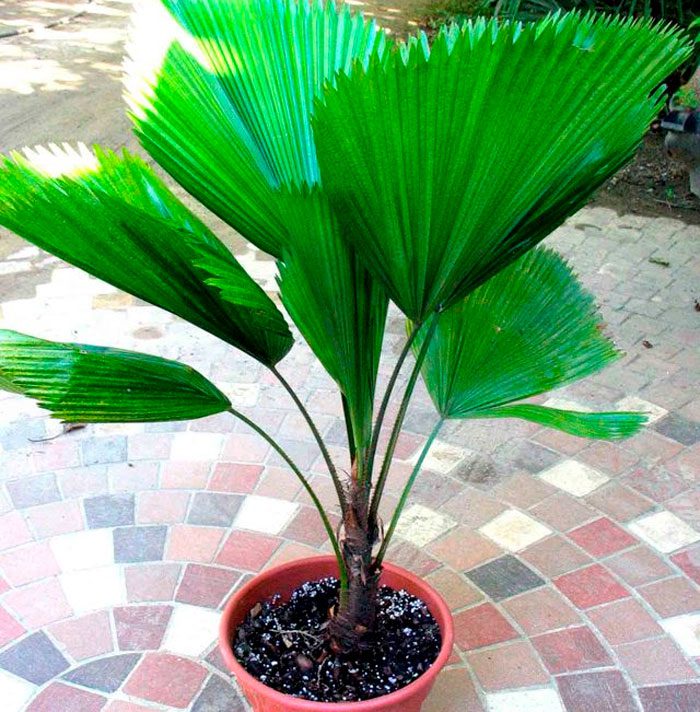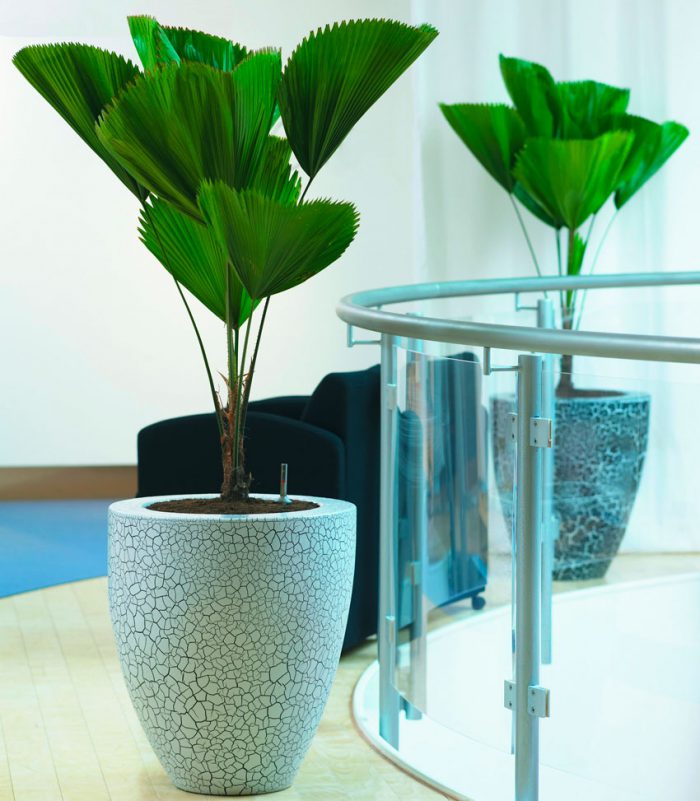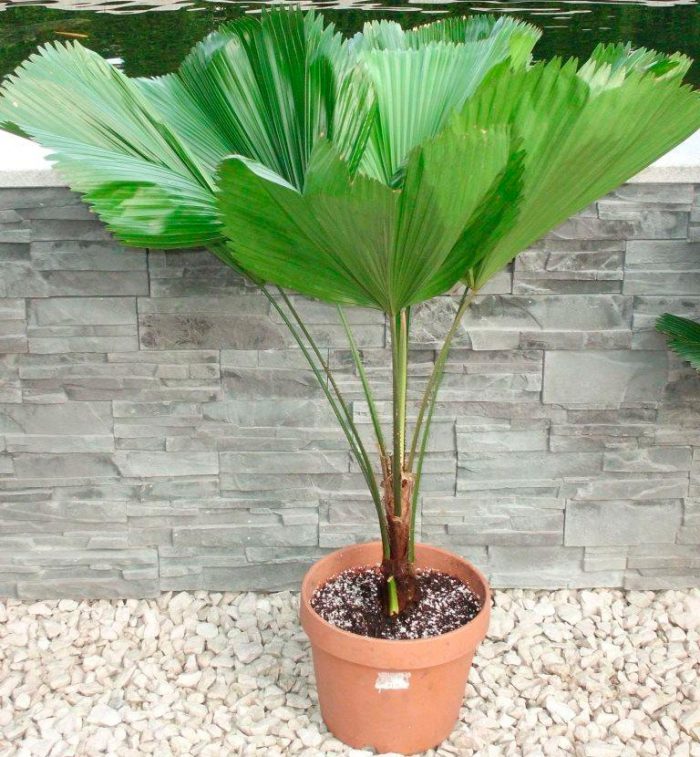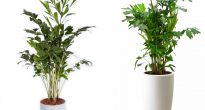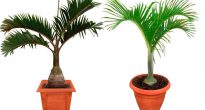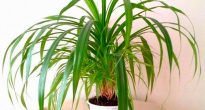A plant such as licuala is directly related to the rarest dwarf palms. This genus unites more than 100 plant species, which are rather stunted.
Under natural conditions, such a palm tree can reach a height of no more than 3 meters, which is relatively small for plants of the palm family. As a rule, palms are quite tall.
Licuala large or large (Licuala grandis) is very popular among florists. Its distinctive feature is beautiful "pleated" rounded leaves, painted in a rich green color. They are very similar in shape to Chinese fans.
Young leaves are similar to small shoulder blades. Full mature leaves are almost round in shape. The leaf plate is divided into separate segments only in the upper part. In adult specimens, leaves can be up to 1 meter wide.
In Thailand, spectacular licuala leaves are used in the manufacture of hats.
Likuala is a large native of South Asia, or rather from the island of New Britain. Under natural conditions, this type of palm tree can reach a height of 2 meters. When grown indoors, the plant height is slightly lower. Home Likuala is a spectacular tree with a slender trunk. This plant bears fruit quite abundantly. Large bright fruits are collected in hanging bunches. However, in indoor conditions, this plant practically does not bloom.
Content
Licuala palm care at home
Illumination
It needs bright lighting, but it is recommended to shade it from the direct rays of the sun, as they can injure the spectacular leaves. It is recommended to place such a palm tree in the immediate vicinity of a window of either western or eastern orientation.
Temperature regime
The recommended temperature of the content is from 16 to 25 degrees. In order for the plant to grow and develop normally, it is recommended to maintain an evenly warm environment without sudden temperature changes throughout the year. In winter, it is necessary to ensure that the room temperature is not lower than 16 degrees.
How to water
In the spring and summer, at high air temperatures, watering should be abundant. After the average daily temperature becomes less than 16 degrees, you need to water a little less. In winter, the plant needs moderate watering.
It is recommended to systematically moisten the foliage from a sprayer. Well-settled, soft, lukewarm water is perfect for this.In winter, the frequency of spraying is reduced. The cooler it is in the room, the less often you need to spray.
Earth mix
Suitable soil should be neutral or slightly acidic. To prepare a suitable soil mixture, it is necessary to combine leaf and sod soil, sand and peat, taken in a ratio of 2: 2: 1: 1. You can also purchase ready-made palm substrate.
Fertilizer
It is necessary to feed the plant in spring and summer, but if desired, fertilizers can be applied to the soil all year round. So, in the spring-summer period it is done 1 time in 2-4 weeks, and in winter - 1 time in 4 weeks. It should be fed only with organic fertilizers, because salinization of the substrate is undesirable for this plant.
Transplant features
Licuala should be transplanted only if absolutely necessary, because she very badly tolerates this procedure. As a rule, the transplant is carried out once every few years.
Reproduction methods
The plant can be propagated by seeds. Sowing is carried out in a lukewarm moist soil to a centimeter depth. The container should be covered with glass or polyethylene. The first seedlings may appear after quite a long time, and they are often rather weak.
Flowering features
Licuala blooms only when grown in a greenhouse. Ripe fruits of a deep red color, collected in hanging bunches, look very impressive.
Diseases and pests
The plant can settle mealybugs, spider mites or scabbards.
This palm is sick, as a rule, due to violations of the rules of care.
- Yellow foliage - too poor watering. Start to water more abundantly, but make sure that the water does not stagnate in the soil.
- Pale dry spots appear on the foliage surface - too intense lighting. Move the palm to a different shaded area.
- Mold has formed on the walls of the pot and on the soil surface - due to overflow in winter. The mold must be removed with a damp cloth and watering must be reduced somewhat.
- The tips of the leaves become brownish - too low air humidity. Spray the palm tree more often, and in the summer you need to increase the frequency of ventilation.
- The leaves darken and fade - the room is too cold.

